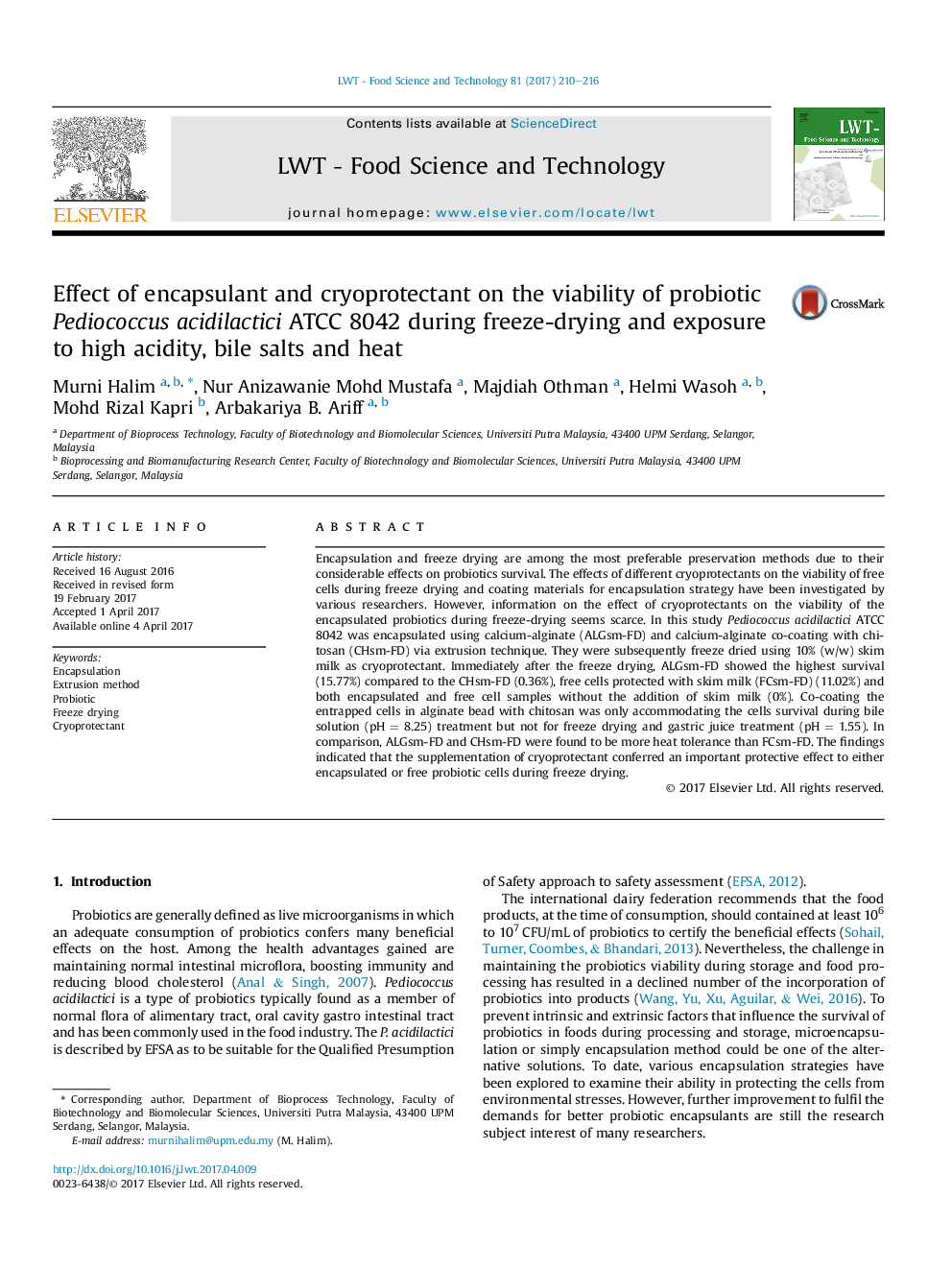| Article ID | Journal | Published Year | Pages | File Type |
|---|---|---|---|---|
| 5768492 | LWT - Food Science and Technology | 2017 | 7 Pages |
â¢P. acidilactici was encapsulated using alginate and chitosan before freeze drying.â¢Alginate encapsulated P. acidilactici showed better survival compared to free cells.â¢Skim milk has increased the encapsulated cells survival rate during freeze drying.â¢Co-coating alginate bead with chitosan was not accommodating the cells survival.
Encapsulation and freeze drying are among the most preferable preservation methods due to their considerable effects on probiotics survival. The effects of different cryoprotectants on the viability of free cells during freeze drying and coating materials for encapsulation strategy have been investigated by various researchers. However, information on the effect of cryoprotectants on the viability of the encapsulated probiotics during freeze-drying seems scarce. In this study Pediococcus acidilactici ATCC 8042 was encapsulated using calcium-alginate (ALGsm-FD) and calcium-alginate co-coating with chitosan (CHsm-FD) via extrusion technique. They were subsequently freeze dried using 10% (w/w) skim milk as cryoprotectant. Immediately after the freeze drying, ALGsm-FD showed the highest survival (15.77%) compared to the CHsm-FD (0.36%), free cells protected with skim milk (FCsm-FD) (11.02%) and both encapsulated and free cell samples without the addition of skim milk (0%). Co-coating the entrapped cells in alginate bead with chitosan was only accommodating the cells survival during bile solution (pHÂ =Â 8.25) treatment but not for freeze drying and gastric juice treatment (pHÂ =Â 1.55). In comparison, ALGsm-FD and CHsm-FD were found to be more heat tolerance than FCsm-FD. The findings indicated that the supplementation of cryoprotectant conferred an important protective effect to either encapsulated or free probiotic cells during freeze drying.
